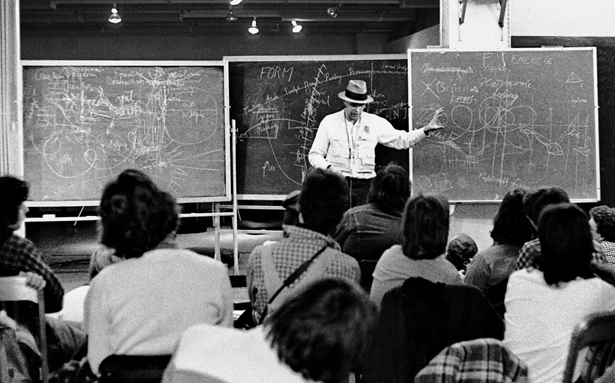Monica Vilhauer: Understanding Art 18/03/20
Monica Vilhauer: Understanding Art 18/0320
When is moderation and marking ‘finished’
Viewing art objectively
The essay begins by delineating how the viewer has an active part in art work, a unique event that is never finished. Gamader suggests there is a constant back and fourth between art work and viewer that eventually builds into a more solid meaning — similar to Roland Barthes’ Death of the author. How do we grade art when in order to view it objectively we take away part of its essence? Is it possible to make the ‘event’ of experiencing creative work for the first time objective?
Gadamer suggests this is possible through collective reflection (see ipsative marking/reflection in my Measuring the Immeasurable post) just as art history works. The best work engage with the past of its medium, adhering and rejecting it in a coherent way.
Playing out bias
Play is an important part of creating art, and interestingly, Gadamer speculates that play is not subjective. It is something which occurs between the players rather than by individuals – it only has representation through a collective of player.
This seems like a good guide for marking and moderation, or what should happen. Play blurs the line between different players and their opinions in a positive way. He goes on to write that this interchange of play keeps happening and doesn’t stop, which begs the question, just like when someone ‘completes a painting, when is marking and moderation finished? Also like in painting, it simply not good to say “it’s not ‘finished, I’ve just stopped working on it’. It’s rare to reach a complete consensus in moderation, but I have wondered if there is another way. What signifies the end of play? And it doesn’t seem to be a question the writer approaches.
However, Gadamer looks at the ‘primacy of play over the consciousness of the player’ which suggests that seeing moderation and marking as essentially an event of play, could help to eliminate personal and even institutional bias, through the way that play creates a freedom of thought.
Marking Constellations
As an idea of how to mark art more objectively, I was thinking about combine the ‘between-space’ of play and how meaning of art, for Gadamer, comes from its various meanings in relation to other pieces of information, or ‘events’ as he might say. Maybe it is best not to mark the work itself, but to mark the constellations of meanings it creates with other works and pieces of information. Has the student done this? How many times? However, this would still have its problems. By isolating anything in contemporary we are trying to transform into academic art from the past (or a series of symbols), and this takes aways it’s more intuitive and ambiguous properties. And marking doesn’t allows enough time for teachers to become critics.
However, by concentrating on between spaces in the marking process (maybe even focusing on these in the marking grid), as teachers we could use serious play to override the individual consciousness of the individual artist and the audience, hopefully to have a more level playing field to reach more solid conclusions.
